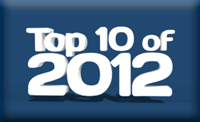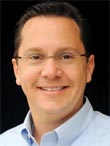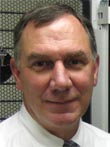The Reality Of EHR Use In The Physicians Practice

Compiled by Ken Congdon, Editor In Chief, Health IT Outcomes
Government incentives are motivating physicians practices to purchase EHRs, but it’s clear that EHR use varies widely from practice to practice, as does the value each office gets out of using the technology.

Panelists:
|
Debbie Alvarez, Practice Manager |
Dr. David Newman, Physician |
Kirk Alexander, Practice Administrator |
Robert Budacki, Practice Administrator |
|
San Antonio Gastroenterology Associates |
DrumHill Pediatrics |
The Center For Bone & Joint Surgery |
ENT Specialists of Northwestern Pennsylvania |
|
9-physician gastroenterology practice |
4-physician pediatric practice |
11-physician orthopedic surgeon practice |
8-physician ear, nose, and throat practice |
If you’re looking for an article that is simply going to sing the praises of EHR technology, I suggest you stop reading. This isn’t one of those puff pieces. The purpose of this roundtable is to provide a true, unbiased gauge on how physicians practices that have adopted EHRs evaluate the technology. To gain this insight, I interviewed practice administrators and physicians from four physician practices of varying specialties. Through these interviews, I was able to truly appreciate the EHR adoption disparity that exists in this sector of the healthcare market. Each practice I spoke with was at a different phase of EHR adoption and faced a unique set of challenges that it was trying to overcome with the technology. Some practices have proven to be innovators, leveraging the technology to benefit their physicians, their patients, and their bottom line. Others are still struggling to get their physicians to use EHRs and question the merit of the technology. If any conclusion can be drawn from this article, it’s that while EHR use has some unmistakable benefits, we still have a long way to go as an industry to ensure the vast majority of physician practices experience them.
Q: When did your practice first implement EHR technology? What was your motivation?
Alvarez: We actually just began our implementation of MicroMD EHR software in April of 2012, but we took some baby steps toward EHR adoption along the way. For example, we implemented an electronic document management system in 2007 to start converting all of our old paper charts to electronic images. We’re now in the process of pushing all of these electronic documents into the EHR system.
Our motivation for implementing an EHR system was quite simple — stimulus dollars. Medicare and Medicaid are going to start to penalize providers if they don’t have EHR systems in place by 2015. We’re already feeling the pinch of reimbursement cuts; we don’t want Medicare and Medicaid to start chipping away at what’s left.
Dr. Newman: We were actually a Misys EHR user since the early 2000s, but when we were informed that our version of Misys wasn’t going to be upgraded to address Meaningful Use requirements, we started looking for another system. We had the option to install a newer version of Misys, but if we had to change anyway, we decided to shop around a bit. We are affiliated with Lowell General Hospital and knew that it operated on Cerner, and I had become informed that Cerner offered an ambulatory EHR as well. If we had to switch to something, it would be nice to operate on the same platform that Lowell General did. We evaluated the Cerner software and installed it in September 2011.
Alexander: We first started down the path of EHR adoption in 2005 when we rolled out Vitera Intergy EHR. However, we initially used the software as a glorified image data management system. We didn’t leverage the structured-data capture the solution provides right out of the gate. In fact, most of our physicians still don’t. Instead, until recently, we simply used the software to scan and store approximately 70,000 paper charts and printed out dictation notes from our transcription company.
A few years ago, our transcription company developed a protocol where it could send us an electronic transfer of its transcription documents together with an index file that could be directly uploaded into Intergy. This prevented us from having to scan thousands of pages of transcription notes into the system, which saved us the work of three full-time employees.
However, we’re still relying way too much on transcription. Our practice spends between $40,000 and $55,000 per month on transcription costs. Recent reimbursement changes have placed increased financial pressure on our physicians, and reducing these transcription costs has become a top priority. Our hopes are to eventually eliminate transcription costs by integrating voice recognition into the EHR and beginning to use structured EHR templates, forms, and encounter notes.
Budacki: We started evaluating EHR software back in 2000, and eventually purchased Misys Pro in 2003. We have since upgraded to Allscripts after it merged with Misys in 2008. We took baby steps toward implementing the EHR. From 2004 to 2005, all we did was scan EOBs (explanation of benefits) into the system. From 2005 to 2008, we worked to customize the EHR templates to fit our needs. We didn’t fully implement and begin using all of the features of the EHR until September of 2008. Our motivation was simple. We thought the move to EHRs in healthcare was inevitable, and we didn’t want to be laggards in this regard.
Q: What have your biggest challenges been in ushering in EHR technology?
Alvarez: To keep everyone positive. To continue pressing on and not throw the technology out the door. There have been some frustrations related to the software itself. For example, it’s not specific enough to gastroenterologists. Furthermore, the current version of the software requires too many clicks to complete a full record. There need to be some shortcuts added that allow users to get to basic information. Our physicians were used to filling out two pieces of paper to complete a record. Now, they have to click through nine screens. This has been a big challenge from a physician perspective.
Dr. Newman: Data migration was definitely the biggest challenge. Taking our old data (whether it was paper charts or the electronic data from our old Misys system) was time-consuming and frustrating. However, once we got that done, working with the EHR interface itself becomes a daily and common activity.
Alexander: Without question it is physician buy-in. Philosophically, the vast majority of our physicians don’t agree with Meaningful Use or the government pushing them to adopt EHRs. Most specialists don’t want the government to have all of that data because they don’t want feds telling them how to practice medicine. In many cases, these feelings cause doctors to reject the technology outright. The challenge we still face with physician buy-in became painfully evident to me over the past two weeks as I’ve been attempting to train our physicians on the voice recognition integration with the EHR system. I was surprised to discover some of our physicians didn’t even know what their login information was to the Intergy EHR software. They’ve been having their staff enter the data (e.g. vitals, lab orders, e-prescribing, etc.) we currently capture via the EHR. They haven’t been doing it themselves.
Budacki: The technology itself can be quite challenging. Doctors want the solution to be turnkey for their specialty, and it isn’t. We found that with most EHR systems, the documentation for an ENT specialist is very poor. This was true even of the software that we ultimately selected. We were forced to go through an extensive process of customizing the templates to fit our precise needs. We deleted a lot of unnecessary items for our specialty (e.g. documentation of bed-wetting in children) and added others. All of this template customization was done by the doctors and took nearly three years to complete.
However, the biggest challenge was addressing the significant amount of data entry most EHRs require of physicians. We have some physicians here who don’t have strong keyboarding skills. Several of these doctors threatened to quit if they were required to type data into the EHR. They felt this act would slow them down significantly and place a barrier between them and the patient. Finding a way to eliminate the physician data entry requirement was a challenge.
|
Kirk Alexander, Practice Administrator, The Center For Bone & Joint Surgery |
Q: What EHR implementation strategies have worked well for your practice? Any best practices you would recommend?
Alvarez: We strived to let everyone take ownership of the conversion process, especially when it came to developing the EHR templates. We ensured that the doctors attended all EHR training activities together with their teams and actually gave the physicians homework assignments to develop the EHR templates for different disease classifications, such as colon cancer or Crohn’s Disease. This strategy ensured the whole burden of developing 30 templates didn’t fall on one doctor or staff member. Furthermore, it provided all of our staff with some level of ownership in the system. The whole team was involved in developing a tool everyone could really use, which sparked user adoption.
Dr. Newman: A physician needs to take a leadership role in the EHR implementation in order for it to be successful — not an office manager or a front desk person. I took the leadership role in our office. I reviewed the EHR technologies and made the decision that best fit the needs of our practice. If a physician doesn’t take a leadership role, he or she will ultimately find something about the software they don’t like. Clinicians are the ones that see the data and work with the data on a day-to-day basis, not the office managers. A physician should ensure that the data is presented in a fashion consistent with his or her workflows and preferences.
Alexander: You can’t jam an EHR down your physicians’ throats. The implementation will be a failure if you do. Instead, you have to wait for it to become their idea. Taking baby steps towards EHR adoption is a good way to gain buy-in. That’s what happened in our practice. Our physicians decided that they wanted to eliminate transcription costs, and increased EHR use combined with voice recognition was the way to accomplish this objective. I also believe focusing your EHR implementation on achieving an ROI rather than satisfying Meaningful Use is critical to success. Building the system to satisfy what’s important to your practice as opposed to what’s important to the government, leads to increased user adoption and satisfaction.
Furthermore, I have a firm opinion that any practice that makes less than $100 million a year simply cannot afford to integrate disparate practice management and EHR systems. Effectively integrating data between these systems, even with HL7, is just too costly and complicated. It requires the support of an expensive, multidisciplined IT staff. Packaged PM and EHR systems are the way to go.
Finally, make sure you get buy-in from all key members of your staff. When we first implemented our EHR software, I neglected to include one of our clinical managers in the process. I didn’t think she had any bearing on the decision. She spent six months trying to tell us how the workflows we were putting together weren’t going to work. Since she had so much face time with the physicians, she significantly influenced their thinking, and the initiative was hobbled from the very beginning.
Budacki: We developed a remote scribe solution that effectively removed the EHR data entry burden from our physicians. With this solution, each physician is assigned a scribe that performs EHR data entry from a dedicated office in the practice. Each physician communicates with his or her scribe via a wireless telephone headset. The physician examines each patient and verbalizes the exam so the scribe can enter pertinent data into the EHR. Moreover, the doctor (and the patient) can see this information being entered into the record real-time because the scribe’s EHR interface is displayed on a 32-inch LCD monitor in the exam room. This is accomplished via simple networking and switching technologies.
Q: What measurable results, if any, has your practice realized through its use of EHR technology?
Alvarez: Since we’re so early in the adoption process, we haven’t yet been able to calculate any measurable results based on core measures. We don’t even have all of our physicians 100% up and running on the system yet. However, one of the significant changes I’ve noticed since deploying the EHR is the fact that health data is now right at the physicians’ fingertips. This is a big plus, because we no longer have to courier paper patient records back and forth between our nine locations. The EHR has also helped to facilitate patient care. For example, since our EHR software is cloud based, our doctors can log into the system via any Web browser. If a physician gets called about a patient while she is at home, she can log onto the system from her home computer and immediately pull up the patient chart.
Dr. Newman: Patient satisfaction has improved as a result of our EHR use. For example, our doctors now have the ability to access patient records from home via the ASP model Cerner provides. E-prescribing has also been a hit with patients because they no longer have to take a paper prescription to the pharmacy and wait a half hour for their medication. We send the pharmacy the order electronically, and the medications are ready for patients to pick up on their way home.
Alexander: Well, we are experimenting with structured templates for EHR data capture, and only one of our physicians is using voice recognition to eliminate transcription. He alone is saving the practice $3,500 a month in transcription costs. Seeing his success, the other physicians are now enthusiastic about learning how to implement forms, templates, and voice recognition on their teams. However, just because we aren’t fully leveraging the capabilities of the EHR doesn’t mean we haven’t realized several benefits.
For example, schedulers used to have to drive across town to our medical records department (which is 15 minutes away) to “check out” all of the patient records for our physicians’ appointments on a given week. We would have to reimburse this employee for mileage for these excursions. Plus, with paper records being lugged all over the place, charts would inevitably get lost or delayed in transit. Physicians often didn’t have the records they needed at the time of a patient appointment. Temporary records were then created to get the patient out the door. These temporary records just served to further complicate matters by duplicating information. Missing and duplicate information caused claims delays with insurance companies.
Converting all of our records from paper to electronic has increased our records management efficiency. We no longer have lost charts. It has improved the efficiency of my insurance collections specialists by 20%. Plus, I have eliminated the mileage expenses I used to have to pay schedulers to retrieve charts from the medical records facility.
|
Robert Budacki, Practice Administrator, ENT Specialists of Northwestern Pennsylvania |
Budacki: A lot of practices might question our remote scribe approach because of the added expenses we incur by hiring full-time scribes. However, we’ve found that our remote scribe EHR solution is so effective that the return on investment more than pays for these salaries.
We have performed a thorough ROI analysis, and our physicians were actually able to increase overall patient volumes by 3.6% as a result of the remote scribe EHR system. All of our doctors noted increased efficiency and were able to see/bill more patients per hour. On average, physicians were able to see 4.14 patients per hour following the implementation of the system compared to 3.81 patients per hour prior to the solution.
Additionally, physician hours expended on patient care and charting actually decreased by 140 over a threemonth period. Furthermore, the remote scribe-assisted EHR also helped to significantly improve our coding accuracy as a result of improved documentation and realtime data entry. The efficiency gains and coding improvements directly contributed to a 32% increase in revenue from billed visits.

 “Adequate EHR workflow testing is crucial. This is a lesson we learned during our transition to Epic.”
“Adequate EHR workflow testing is crucial. This is a lesson we learned during our transition to Epic.” “Our physicians were actually able to increase overall patient volumes 3.6% as a result of the remote scribe EHR system.”
“Our physicians were actually able to increase overall patient volumes 3.6% as a result of the remote scribe EHR system.”